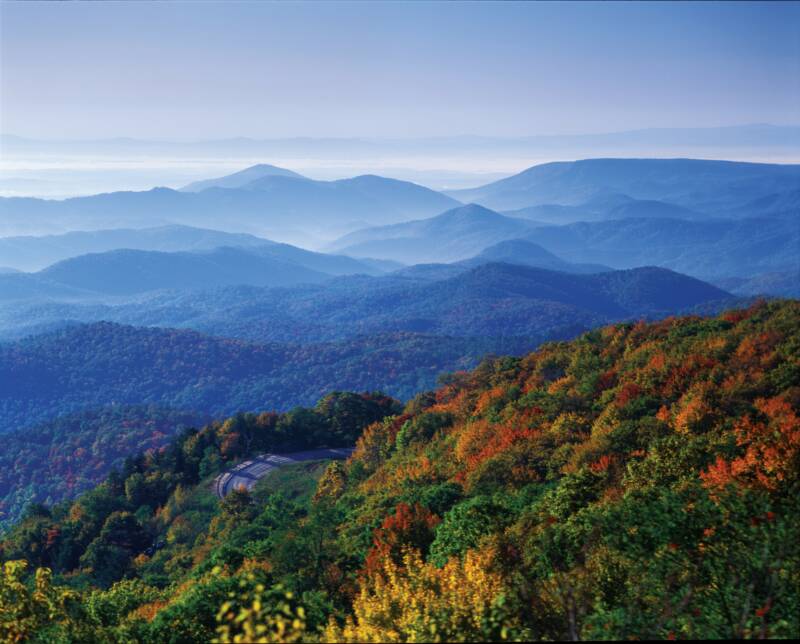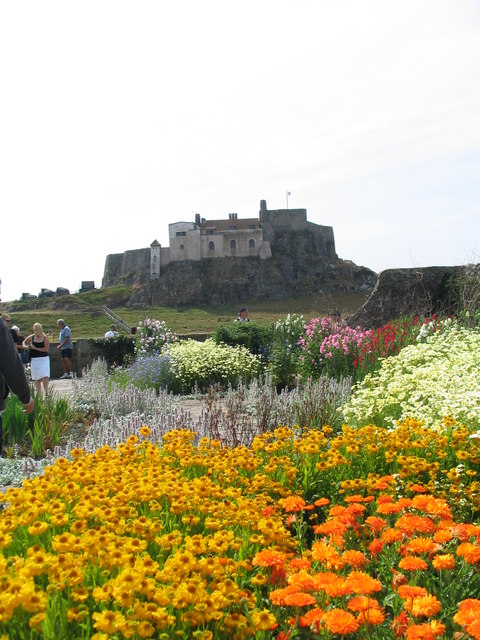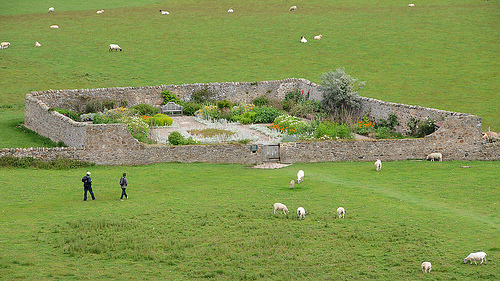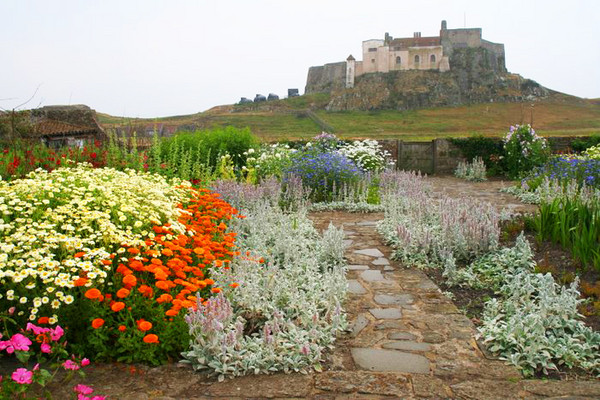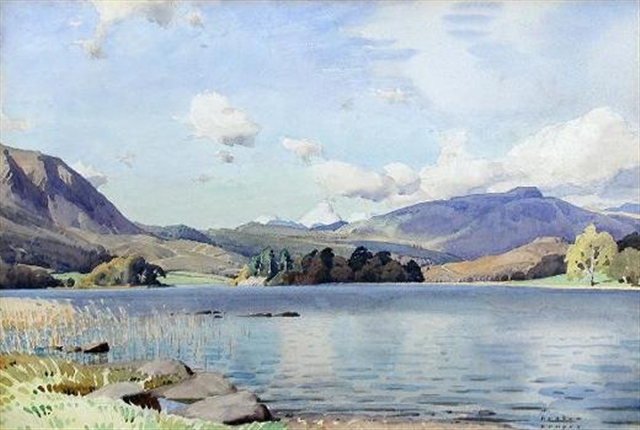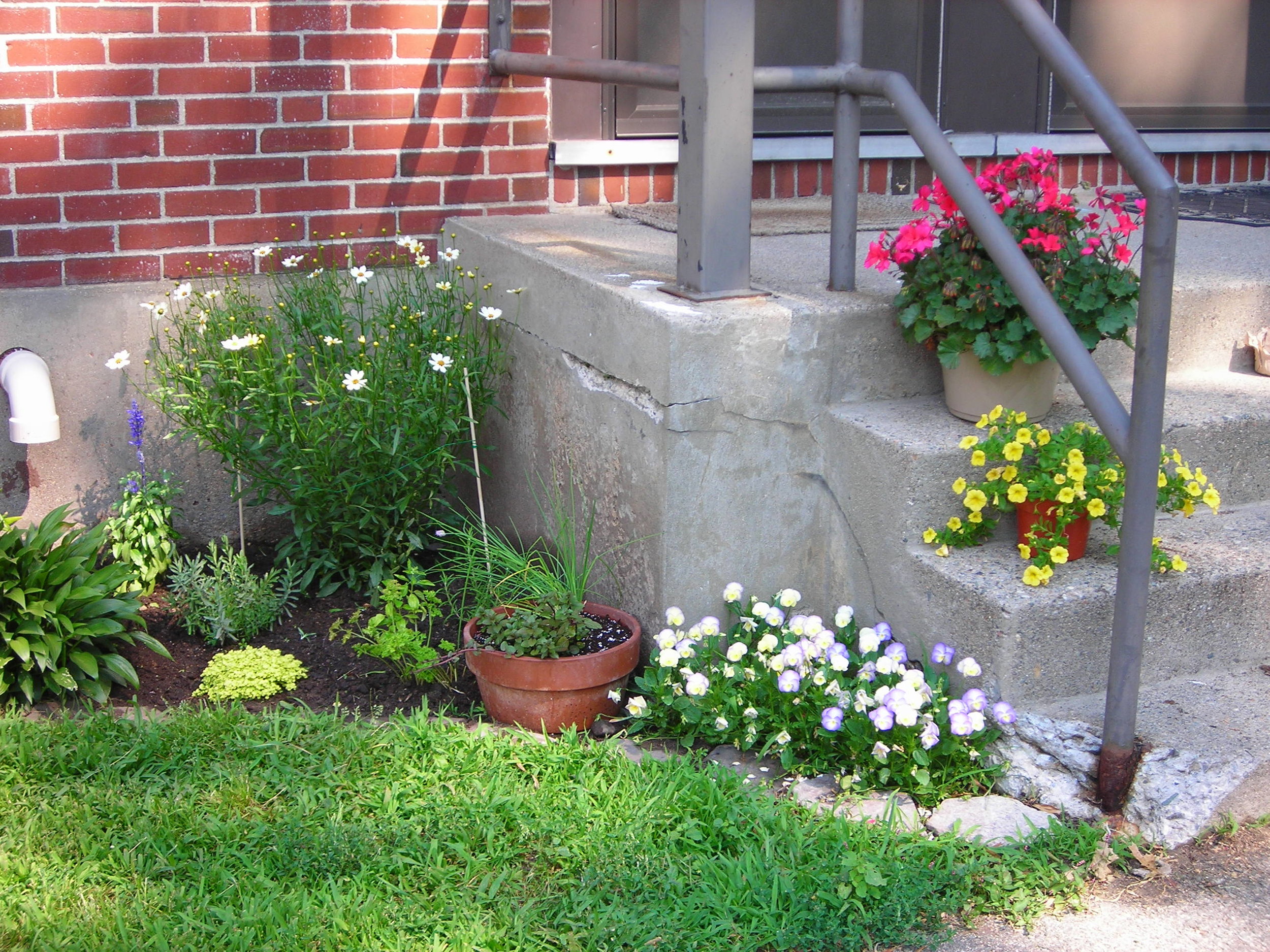 Here is a great story of how beauty really can change the world. A low-income housing complex in Boston has been transformed, through the work of its residents, into a place of beauty and dignity. It started with one or two people deciding to plant the little plots of land in front of their houses, then others seeing what was going on and starting to do the same. And according to the delighted director of the complex, who has just been watching this happen over the last year or so, it has brought benefits to the community as a whole that one just wouldn't have imagined. I have written before about the importance of the pleasure of gardening and as the garden as a symbol of the culture of life in which man's harmonious work with nature raises it up beyond its natural state. But here is a story of how there is an underlying truth to this that really does affect people's lives for the good; we are talking here of people who, bar one, have never read my blog and are not likely to. There are no Chelsea Garden Show gold medal winners. This is just everyone mucking in and having a go.
I heard about this from Nancy Feeman, who is working with me and a band of enthusiastic students to establish an English style garden at a farmhouse in Groton, Massachusetts. The farm on which this stands will, once the money is raised for building, be the site for the new campus for Thomas More College. Nancy lives in the complex; she became connected with the college by coming along to one of the Way of Beauty retreats, two summers ago. (She has written about how this sparked an interest in gardening before, here.)
Here is a great story of how beauty really can change the world. A low-income housing complex in Boston has been transformed, through the work of its residents, into a place of beauty and dignity. It started with one or two people deciding to plant the little plots of land in front of their houses, then others seeing what was going on and starting to do the same. And according to the delighted director of the complex, who has just been watching this happen over the last year or so, it has brought benefits to the community as a whole that one just wouldn't have imagined. I have written before about the importance of the pleasure of gardening and as the garden as a symbol of the culture of life in which man's harmonious work with nature raises it up beyond its natural state. But here is a story of how there is an underlying truth to this that really does affect people's lives for the good; we are talking here of people who, bar one, have never read my blog and are not likely to. There are no Chelsea Garden Show gold medal winners. This is just everyone mucking in and having a go.
I heard about this from Nancy Feeman, who is working with me and a band of enthusiastic students to establish an English style garden at a farmhouse in Groton, Massachusetts. The farm on which this stands will, once the money is raised for building, be the site for the new campus for Thomas More College. Nancy lives in the complex; she became connected with the college by coming along to one of the Way of Beauty retreats, two summers ago. (She has written about how this sparked an interest in gardening before, here.)
I'll let Nancy describe it: 'I have lived here for 9 years. The housing complex in Boston was originally built for the returning WWII veterans and their families. Later it was converted to housing for low-income families. Here we pay 27% of our income for rent as well as heat and electric. For me working in a Catholic school and as a single mom it was a huge relief to know that my rent would only change according to my income. Still it was difficult to move here because of the social implications, prejudices and the difficulties raising children here. But God’s grace has helped us overcome every difficulty. Recently changes in policy from the Housing Authority, which has always work hard to make this a good community, have had a positive effect. About 4 years ago they received a grant for a huge renovation project and every apartment was completely remodeled which meant new and updated kitchen and bath. They put in a small police substation to deal with crime, more lights, cameras, speed bumps, and the director moved her office from the main building to this complex about a year ago.
I was told about seven years ago that I could not hang a planted basked from the rail outside my house. That was disappointing I admit, but I am sure they had very good reasons at time. Then about a year ago I noticed that a couple of people were doing little bits of gardening here and there and went to ask the director about it. I was pleased that this time the policy was different and she encouraged me to do it.
I have a tiny plot of land in front of my house and so this year I have planted it in the English style, that I have learnt about from the writing of Gertrude Jeckyll. This is a new interest for me and I am just finding out about plants, and this is just the first year I have tried it. I am just learning as I go along. What has happened is that gradually people have noticed what I have been doing and asking me about it and then starting to have a go themselves. As far as I know, most had no knowledge of gardening or plants before this. I feel as though I am only half a step ahead of the starter-gardeners. I am not using exotic plants at all - just the ordinary things that you buy from the garden centre, but the colour combinations and that way of packing out the bed so that eventually there are no spaces, which comes from Jeckyll, does have an impact. Not everybody is doing exactly what I am doing, but more and more are planting something and making an effort to think about how in other ways to make the place look neat and tidy. There has been a definite change in the attitude of people who have gardened even if they have simply begun to rake around the trees outside their apartment or sweep their porch. ’
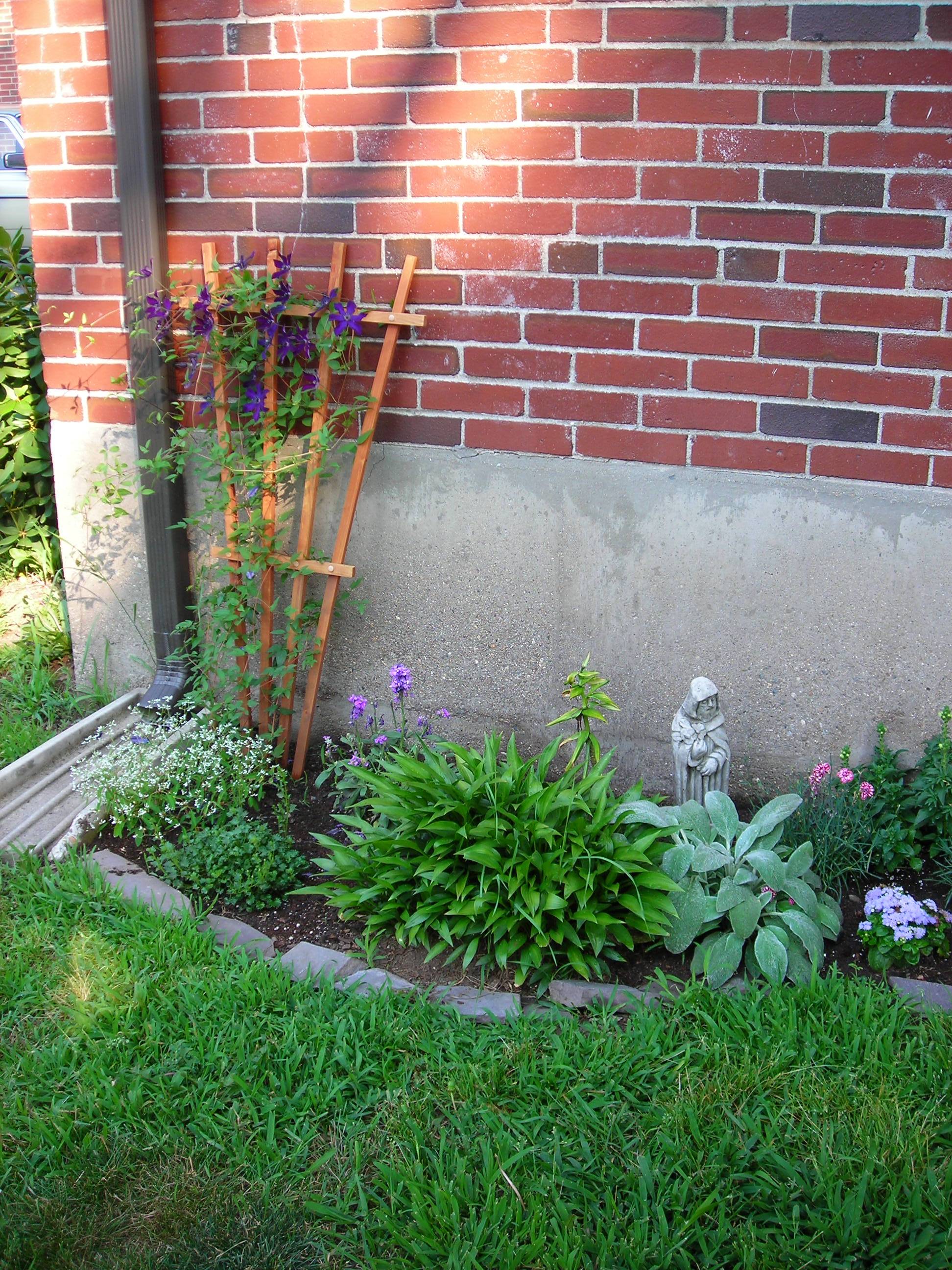 Recently, the director of the complex, who has planted some annuals in front of her office called Nancy over just tell her how wonderful she thinks the imact is on the whole street: 'The director was full of excitement and told me how beautiful she thinks all the flowers are and how it has spread from house to house. She said: "More people are starting to garden and care about their place. This is their home and it is so wonderful to see them even just rake or sweep their area because it means they care and that is what we want. Also, the gardening brings people outside and then they interact with each other and that builds more community." The director even involves the local children: "The children love the plants too. I invite them to help pit annuals in front of my office and they take great delight in carrying the water jug to and fro to water their small garden.” She even told me that she taken aside all the summer student workers and the maintainance people to explain to them which plants are to be left and which are the weeds so that they don't take things out accidentally with their mowers and weedwackers!'
Recently, the director of the complex, who has planted some annuals in front of her office called Nancy over just tell her how wonderful she thinks the imact is on the whole street: 'The director was full of excitement and told me how beautiful she thinks all the flowers are and how it has spread from house to house. She said: "More people are starting to garden and care about their place. This is their home and it is so wonderful to see them even just rake or sweep their area because it means they care and that is what we want. Also, the gardening brings people outside and then they interact with each other and that builds more community." The director even involves the local children: "The children love the plants too. I invite them to help pit annuals in front of my office and they take great delight in carrying the water jug to and fro to water their small garden.” She even told me that she taken aside all the summer student workers and the maintainance people to explain to them which plants are to be left and which are the weeds so that they don't take things out accidentally with their mowers and weedwackers!'
As Nancy said to me when relating the story: 'I think this does speak to the truth of human dignity towards things that are good and beautiful and gardening is part of that. It’s not just the beauty of the effect, but even working this tiny garden you feel the truth of the idea that there is dignity in working the land.
'It has made a big difference for me living here to be able to garden and to bring some beauty into a place that is not always easy to live in. It’s so good that it brings joy to people and that when they see the flowers so many have been inspired to join in and do it themselves. '
What I love about this story is the way in which that has happened without the need for an organisational input or even community meetings. It has just happened organically (if you'll forgive the pun). When one person started doing it the others followed suit. There has been no cost to the taxpayer and precious little to the individuals involved.
We'll finish with a quote from Gertrude Jeckyll that Nancy brought to my attention: 'The size of a garden has very little to do with its merit. It is merely an accident relating to the circumstances of the owner. It is the size of his heart and brain and goodwill that make his garden delightful.'

Above is the approach to the complex. Nancy's street is beyond this, below.

And below is a typical view of the what the house front would look like before. At best neat and tiday, but soulless:

And that can be changed into this:

People have been planting the stone circles in the middle of the common lawn area, sometimes with garden plants:

And sometimes seeding with wild flowers:

And then they plant and arrange their house fronts in a variety of differents ways. As you look at them, remember that this is the first summer, the plants will mature in future years if this continues:
















































